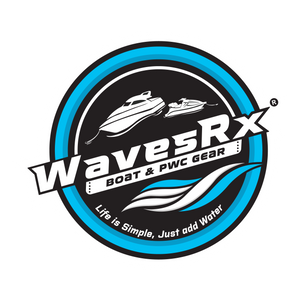How to Setup Docking for Your PWC
Setting up docking for your Personal Watercraft (PWC) can seem a bit overwhelming, but it's much easier once you know the basics. Whether you're new to owning a PWC or just looking to improve your docking setup, understanding the essentials can save you time and keep your watercraft in great shape. Let's dive in and explore the best tips and practices for setting up docking for your PWC!
Choosing the Right Docking Space for Your PWC
Finding a good spot to dock your Personal Watercraft (PWC) is important for keeping it safe and making it easy to use. Here are some key factors to consider:
Water Depth: Make sure the water is deep enough to keep your PWC afloat but not so deep that it makes docking difficult. A depth of around 3 to 5 feet is usually ideal.
Accessibility: Choose a spot that’s easy to reach from both the water and the land. You don’t want to struggle every time you dock or take out your PWC. Consider how easy it is to tie up and if there’s a clear path to and from the dock.
Safety: Safety is a big deal. Look for spots that are protected from waves and strong currents. If possible, pick a location sheltered from the wind to make docking smoother.
Tips for Finding the Perfect Spot
- Scout in Advance: Visit potential docking areas beforehand to check them out. Look for hazards like rocks or submerged items that could damage your PWC.
- Talk to Locals: Ask other PWC owners for advice on good docking spots. Local knowledge can be very helpful.
- Test the Spot: Try docking your PWC at different times of the day to see how the conditions change. You might find that a spot that’s perfect in the morning becomes too windy in the afternoon.
Essential Docking Equipment for PWCs
Having the right equipment makes docking your PWC easier and safer. Here’s a list of the essential items you’ll need:
Dock Lines
- Key Features: Look for strong, marine-grade ropes that won’t fray easily. Elastic ropes can absorb the shock of waves and movements, keeping your PWC secure.
Fenders
- Key Features: Fenders protect your PWC from bumps and scrapes. Choose durable, inflatable fenders that can be adjusted to the right height for your dock.
Cleats
- Key Features: Cleats are used to tie up your PWC securely. Opt for stainless steel cleats that are resistant to rust and corrosion. Make sure they’re installed at convenient points for easy access.
Bumpers
- Key Features: Bumpers help cushion your PWC against the dock. They should be made of sturdy, weather-resistant materials and be adjustable to fit different docking angles.
Safety Gear
- Key Features: Have a throw rope and life jacket handy in case of emergencies. These items should be easily accessible and stored in a dry place.
By making sure you have all the necessary docking equipment and understanding what features to look for, you can create a docking setup that protects your PWC and keeps it secure.
Step-by-Step Guide to Docking Your PWC
Docking a PWC can be tricky, especially if you're new to it. Follow these steps to make the process smooth and safe:
Approaching the Dock
1. Slow Down: Approach the dock at a slow speed. High speed can cause collisions and damage.
2. Angle Correctly: Aim to approach the dock at a 20 to 30-degree angle. This makes it easier to control the PWC and align it with the dock.
3. Use Reverse to Stop: Use the reverse function to slow down and stop your PWC right before you reach the dock.
Securing Your PWC
1. Prepare Dock Lines: Have your dock lines ready before you reach the dock. This will help you secure the PWC quickly.
2. Tie Correctly: Tie the dock lines to the cleats securely. Ensure they are tight enough to hold the PWC in place but not so tight that they cause strain on the lines or the PWC.
3. Attach Fenders: Place fenders between the PWC and the dock to prevent scratches or damage.
Common Mistakes to Avoid
- Rushing: Don’t rush when docking. Take your time to align and slow down properly.
- Incorrect Knot Tying: Learn and practice the correct knots to use for securing your PWC.
- Ignoring Conditions: Pay attention to the wind and current conditions that may affect your approach and docking.
Maintenance Tips for Your Docking Setup
Keeping your docking setup in good condition is important for the safety and durability of your PWC. Here are some tips for maintaining your docking setup:
Regular Upkeep
- Clean Dock Lines: Rinse your dock lines with fresh water after use to remove salt and dirt. Store them in a dry place to prevent mold and deterioration.
- Check Fenders: Inspect your fenders for any signs of wear and tear. Replace them if they are damaged to ensure proper protection.
- Inspect Cleats: Regularly check cleats and other attachment points for rust or damage. Tighten any loose bolts and replace damaged parts.
Spotting and Fixing Issues
- Watch for Fraying: Check all ropes and dock lines for fraying. Replace any line that shows signs of weakening.
- Check Metal Parts: Look for rust or corrosion on any metal parts, including cleats and chains. Use a rust remover or replace severely corroded items.
- Test Stability: Ensure that your dock structure is stable and secure. Address any wobbliness by tightening bolts or adding additional supports.
Conclusion
Setting up a safe and efficient docking system for your PWC ensures that it remains in good condition and is ready for your next adventure. By carefully choosing the right docking space, having the essential equipment, following the correct docking steps, and maintaining your setup, you can avoid many common problems. Regular checks and proper upkeep can make all the difference in keeping your PWC safe and sound.
If you're ready to upgrade your docking gear or need reliable PWC accessories, check out WavesRx for high-quality, premium products designed to meet all your boating needs. Shop now!


